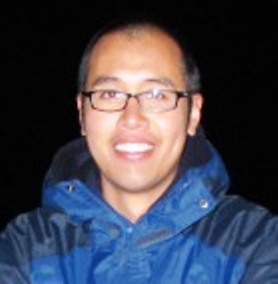
Chawalit "Net" Charoenpong
Joint Program Student
Marine Chemistry & Geochemistry
Contact Information:
Work: 508-289-4819
ccharoenpong@whoi.edu
Building: Clark 403 B
Mailing Address:
266 Woods Hole Road, MS #25
Woods Hole Oceanographic Institution
Woods Hole, MA 02543
Research Interests
Marine nitrogen cycle using natural variations in isotopic ratios, such as 15N/14N and 18O/16O of NO3- and NO2-, and dissolved gas dynamics with emphasis on near-shore basins, oxygen minimum zones, estuaries and salt marshes.
Selected Publication
Chawalit N. Charoenpong, Laura A. Bristow, Mark A. Altabet, A continuous flow isotope ratio mass spectrometry method for high precision determination of dissolved gas ratios and isotopic composition, , Limnology and Oceanography: Methods, May 2014
Dissolved gas ratios and isotopic compositions provide essential information about the biological and physical mechanisms influencing N2, O2, and Ar in aquatic systems. Current methods available are either limited by overall cost, labor-intensive sample collection and analysis, or insufficient precision. Here, we present a new highly accurate and robust method for sample collection and subsequent simultaneous measurement of the dissolved gas ratios (N2/Ar and O2/Ar) and isotopic compositions (δ15N2 and δ18O2) in seawater. The relatively simple sampling procedure using low cost materials enables collection of hundreds to more than a thousand discrete samples on a single research cruise. Samples can be preserved and stored at room temperature and maintain their integrity for many months. Laboratory analysis employs an on-line extraction system coupled to a multi-collector isotope ratio mass spectrometer (IRMS). A continuous flow of He carrier gas completely degasses the sample, and passes through the preparation and purification system before entering the IRMS for analysis. The use of this continuous He carrier permits short analysis times (less than 8 min per sample) as compared with current high-precision methods. In addition to reference gases, calibration is achieved using air-equilibrated water standards of known temperature and salinity. Assessment of reference gas injections, air equilibrated standards, as well as samples collected in the field shows the accuracy and precision of this new method to be equal to or better than current standard techniques.
Education
M.S., Marine Sciences and Technology (Marine Biogeochemistry and Environmental Change), 2010-2013
- University of Massachusetts Intercampus Marine Science Graduate Program
- Advisor: Dr. Mark A. Altabet (UMass Dartmouth)
- Thesis: A continuous flow isotope ratio mass spectrometry method for high precision determination of dissolved gas ratio and isotopic composition
Summer course in Microbial Oceanography, Jun-Jul 2011
- Bermuda Institute of Ocean Sciences (BIOS)
- Taught by Dr. Craig Carlson, Dr. Stephen Giovannoni, Dr. John Heidelberg, and Dr. Craig E Nelson
B.S., Marine Science (Marine Biology and Fisheries), First class honors 2000-2004
- Chulalongkorn University, Bangkok, Thailand
- Advisors: Dr. Ajcharaporn Piumsomboon (Chulalongkorn U.) and Dr. Kanjana Adulyanukosol (Phuket Marine Biology Center)
- Senior research project: Stomach contents of dugongs from Trang and Phuket Provinces, Thailand